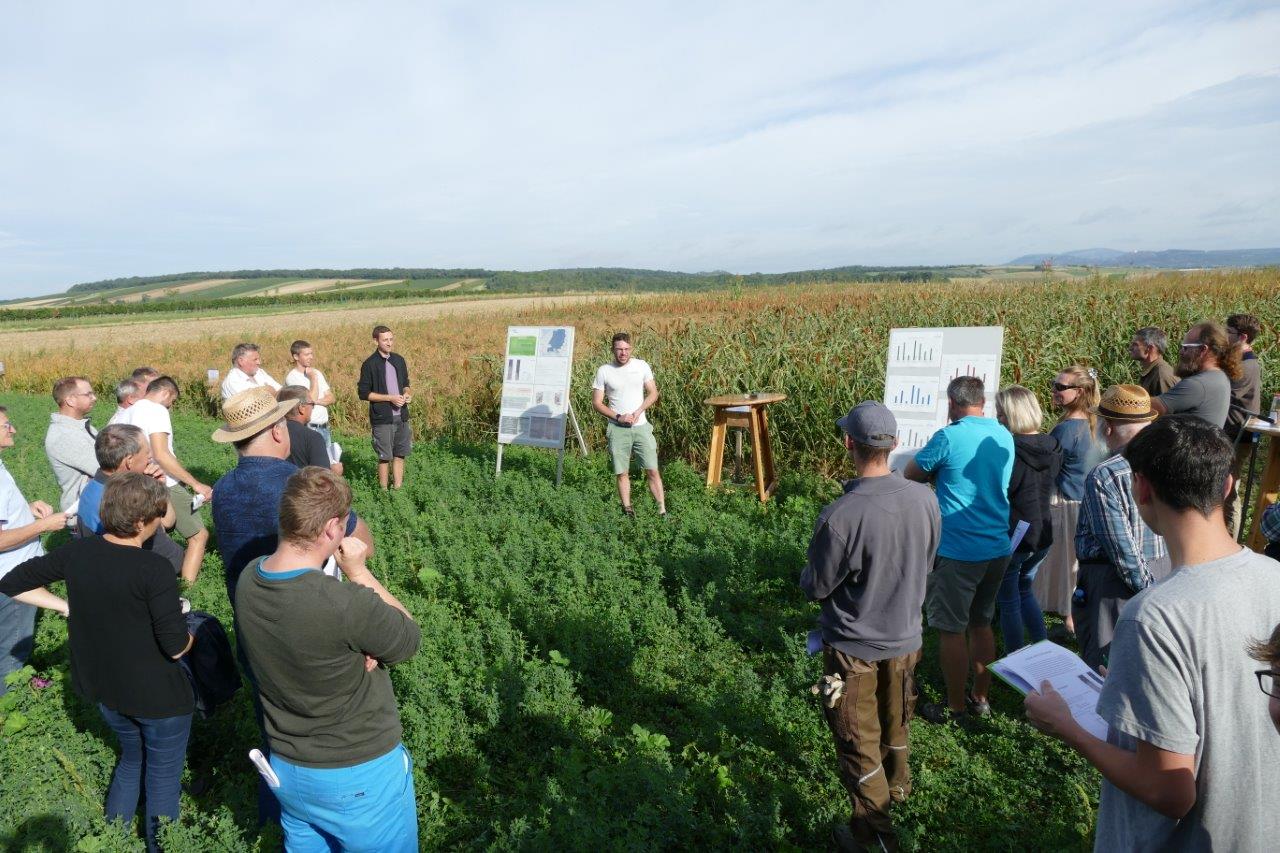On 22nd September, Austria’s co-creation workshop took place on-site at the Carbon Farming Technique field trial in Poysbrunn, Lower Austria. About 50 farmers participated to become familiar with the Carbon Farming technique “diversification of crop rotation,” particularly with the cultivation experiences and benefits of the dry-tolerant C4-millet crops of the botanical families Panicum, Sorghum, and Setaria, which are introduced and tested in the field.
- A major obstacle for cultivating additional crops is the limited sales opportunities, such as farmers with livestock. Agricultural companies tend to buy new crops only in large quantities. That is why farmer cooperatives could help to initiate crop diversification.
- At the workshop, agricultural water efficiency and the key role of plant roots and their interaction with soil microbes for (long-term) carbon sequestration were also discussed.
- The challenge of measuring and evaluating a dynamic process like carbon sequestration was discussed, and methods of analyzing different fractions of SOC and their role in carbon sequestration were introduced and discussed.
- Besides scientific challenges in accurately measuring carbon sequestration, farmers also identified possible obstacles in liabilities and financial risks within carbon farming business models if well-executed carbon farming techniques did not lead to increasing, maybe even decreasing SOC contents at any time within a contract period.
